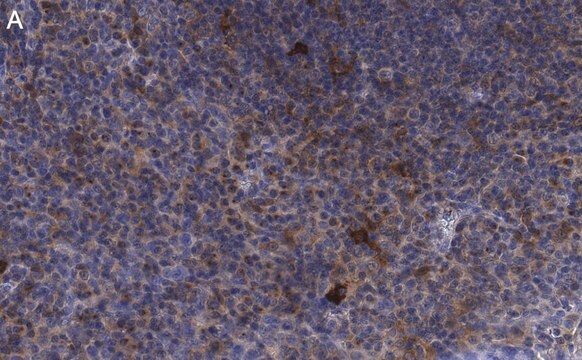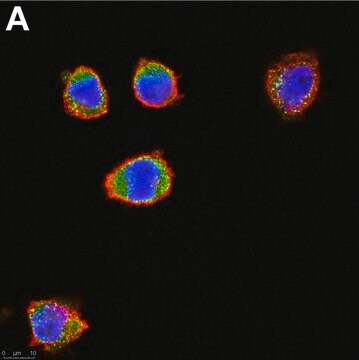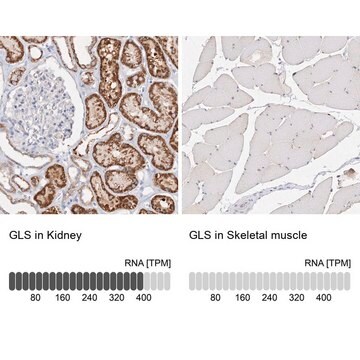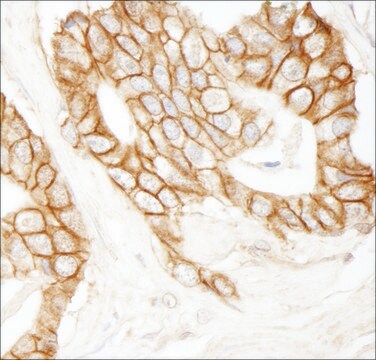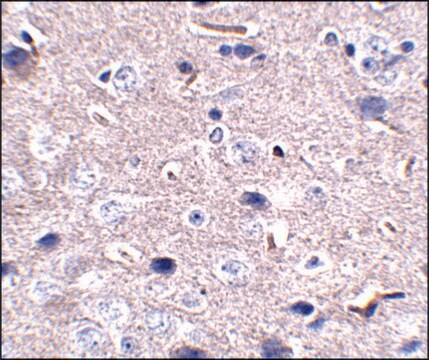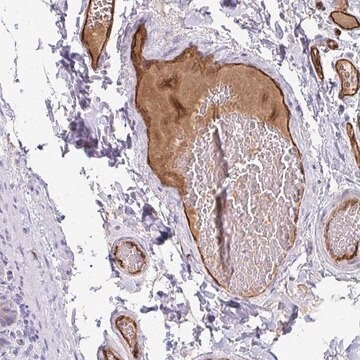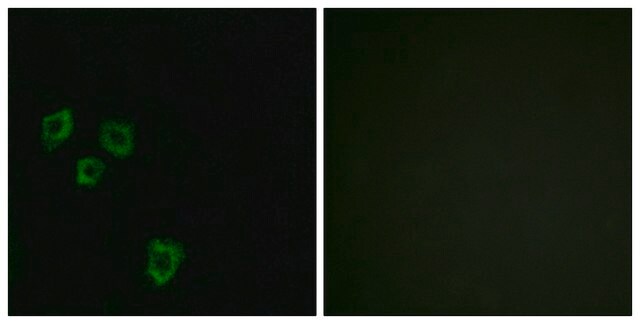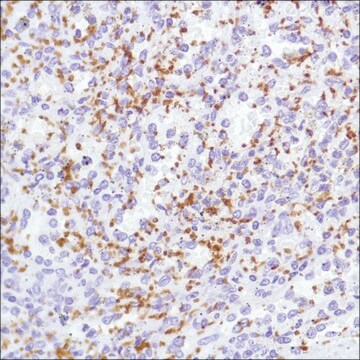MABF2101
Anti-CD25 Antibody, clone 7D4
About This Item
Productos recomendados
biological source
rat
Quality Level
conjugate
unconjugated
antibody form
purified antibody
antibody product type
primary antibodies
clone
7D4, monoclonal
mol wt
calculated mol wt 30.72 kDa
purified by
ion-exchange chromatography
species reactivity
mouse
packaging
antibody small pack of 100 μg
technique(s)
flow cytometry: suitable
immunocytochemistry: suitable
immunohistochemistry (formalin-fixed, paraffin-embedded sections): suitable
immunoprecipitation (IP): suitable
inhibition assay: suitable
radioimmunoassay: suitable
isotype
IgM
epitope sequence
Extracellular domain
Protein ID accession no.
UniProt accession no.
shipped in
dry ice
target post-translational modification
unmodified
Categorías relacionadas
General description
Specificity
Immunogen
Application
Evaluated by Immunocytochemistry in RAW264.7 cells.
Immunocytochemistry Analysis (ICC): 1:25 dilution of this antibody detected Interleukin-2 receptor subunit alpha (CD25) in RAW264.7 cells.
Tested Applications
Inhibition: A representative lot inhibited proliferation of the HT2 cells and of IL-2-dependent CTLL cells. (Malek, T.R., et al. (1983). Proc Natl Acad Sci USA.;80(18):5694-8; Ortega, G., et al. (1984). J Immunol.;133(4):1970-5; Pollard, A.M., et al. (1990). J Exp Med.;172(1):159-67; Nihei, J. et al. (2014). Eur J Microbiol Immunol (Bp).;4(2):128-37; Teege, S., et al. (2015). Sci Rep.;5:8959).
Immunohistochemistry Applications: A representative lot detected CD25 in Immunohistochemistry applications (Nihei, J. et al. (2014). Eur J Microbiol Immunol (Bp).;4(2):128-37).
Immunoprecipitation Analysis: A representative lot immunoprecipitated CD25 in Immunoprecipitation applications (Malek, T.R., et al. (1983). Proc Natl Acad Sci USA.;80(18):5694-8; Ortega, G., et al. (1984). J Immunol.;133(4):1970-5).
Flow Cytometry: A representative lot detected CD25 in Flow Cytometry applications (Malek, T.R., et al. (1983). Proc Natl Acad Sci USA.;80(18):5694-8; Ortega, G., et al. (1984). J Immunol.;133(4):1970-5; Malek, T.R., et al. (1985). J Immunol.;134(4):2405--13; Kohm, A.P., et al. (2006). J Immunol.;176(6):3301-5; Nihei, J. et al. (2014). Eur J Microbiol Immunol (Bp).;4(2):128-37; Teege, S., et al. (2015). Sci Rep.;5:8959).
Radioimmunoassay: A representative lot detected CD25 in Radioimmunoassay applications (Ortega, G., et al. (1984). J Immunol.;133(4):1970-5).
Note: Actual optimal working dilutions must be determined by end user as specimens, and experimental conditions may vary with the end user
Physical form
Storage and Stability
Other Notes
Disclaimer
¿No encuentra el producto adecuado?
Pruebe nuestro Herramienta de selección de productos.
Storage Class
10 - Combustible liquids
wgk_germany
WGK 2
flash_point_f
Not applicable
flash_point_c
Not applicable
Certificados de análisis (COA)
Busque Certificados de análisis (COA) introduciendo el número de lote del producto. Los números de lote se encuentran en la etiqueta del producto después de las palabras «Lot» o «Batch»
¿Ya tiene este producto?
Encuentre la documentación para los productos que ha comprado recientemente en la Biblioteca de documentos.
Nuestro equipo de científicos tiene experiencia en todas las áreas de investigación: Ciencias de la vida, Ciencia de los materiales, Síntesis química, Cromatografía, Analítica y muchas otras.
Póngase en contacto con el Servicio técnico